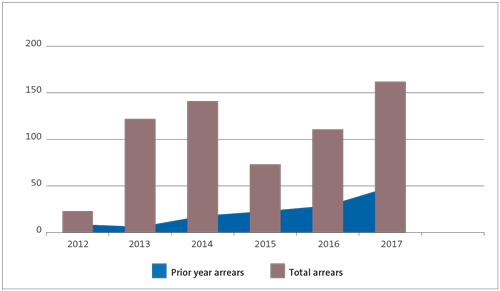Part 1: Completion of the 2016 school audits
Update: After our report was finalised, Manurewa West School provided evidence that four staff members had reimbursed the costs for the trip to Kuala Lumpur (see paragraph 2.13).
1.1
Of the 2453 audits that we expected to complete for 2016 (which includes schools and school subsidiaries), we completed 1993 (81%) by the statutory deadline of 31 May 2017. This was an improvement on the 75% of 2015 audits completed by the statutory deadline. However, we are still well below our expectation of completing 95% of school audits before the deadline.
1.2
We were pleased that, for the 2016 school financial statements, the Ministry improved its guidance and provided its Kiwi Park model financial statements earlier. This meant that schools’ draft financial statements provided for audit were a better quality than those provided last year. Nevertheless, some schools are still struggling with some of the requirements of the new standards. The extra payroll reports needed to complete the financial statements are also still having an effect, although this is lessening.
1.3
By November, we usually expect less than 1% of the previous year’s school audits to be outstanding. As at 10 November 2017, we had 5% of the 2016 school audits outstanding (113 in total). This is higher than at the same time last year, when 82 of the 2015 school audits were in arrears. One of our auditors has not completed a large number of his audits (18), which contributes to this increase. We are working closely with the auditor and the affected schools to complete these audits as soon as possible.
1.4
Once the statutory deadline passes, auditors face pressures resourcing the remaining audits because they have other work planned. We have experienced several years of poor completion since Novopay was introduced in 2012, and, as a result, the number of prior-year audits in arrears continues to increase, as shown by Figure 1. As at 10 November 2017, we had 49 audits outstanding from 2015 and earlier.
Figure 1
Audits in arrears as at 10 November in the years 2012 to 2017

1.5
Appendix 1 lists the outstanding audits as at 10 November 2017.
